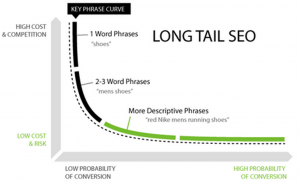
Old School SEO is Dead
“SEO is dead” is one of the most common things you’ll hear from marketing bloggers trying to get a few extra page views by courting controversy. This is ridiculous – in today’s ultracompetitive marketplace, Search Engine Optimization is more important than ever.
What is true, however, is that old school SEO is dead. When I say old school, I’m referring to what a lot of people who aren’t SEO professionals think of when they hear SEO. Keyword stuffing, link networks, and other old-fashioned methods are no longer effective at boosting your ranking. In fact, many of these older methods are actually punished by search engines because they’re seen (rightfully) as an attempt to manipulate search results.
While these old school practices are dead, SEO is still kicking and incredibly important to anyone who wants to market their business online. The difference now is that instead of trying to trick Google and other search engines, the goal is to help them better understand what your site is really about.
If your site just exists to try to trick people into clicking through to your sales pitch, it’s not going to work in today’s search environment. That’s why part of modern SEO is making sure your site itself is working to meet your SEO goals by creating relevant content that will be valuable for search engine users. A big part of this is determining the search intent of your potential customers.
What is Search Intent?
Traditional keyword research is about trying to improve your site’s search ranking for keywords related to your industry. Search intent is all about determining why potential customers search for the terms that they do, and then optimizing your site for terms people use when they might want to buy from you.
For example, in the old Wild West days of SEO, if you owned a pizza place you would fight tooth and nail to try to rank for the word “pizza”. These days, while it’s great if you can rank for “pizza” in your city, it’s more valuable to spend your time focusing on ranking for terms that more clearly signal the searcher’s intent to buy pizza in the near future.
Someone searching for “pizza” might be looking for a new pizza restaurant to try out, but they also might be searching for pizza recipes, or wondering about the amount of calories in the average slice, or any number of other pizza-related searches.
Ranking for “pizza” is going to be an incredibly competitive, and therefore expensive, term to rank for. You could spend a lot of time, energy, and money trying to rank for “pizza” and waste a lot of those resources on people who are just looking for recipes, or you could target search terms that are less competitive but are a better signal that someone is hungry right now.
If I search for so-called long-tail keywords like “pizza in my neighborhood” or “pizza restaurant open late,” you can bet that I’m on the hunt for pepperoni and cheese. These long-tail search terms clearly indicate my intent to buy a pizza in the near future, and as a bonus, they’re much easier to make a site rank for.
How to Optimize for the Long Tail

The long-tail keywords are the ones at at the right end of the graph. (Image via SEO SiteCheckup)
The goal of modern SEO is to build a site with users’ search intent in mind. We’ve written before about how creating great content is the key to SEO. When you’re creating content for your site, whether it’s blog posts or videos or anything else, you will want to keep your customers’ search intent in mind. With the example above, if a website for a pizza restaurant had produced a bunch of content about my neighborhood, they would probably be at the top of the results for my “pizza in my neighborhood” search.
But How do I Discover Search Intent?
Discovering your customers’ search intent is largely a matter of intuition and guesswork – you know your customers better than anyone, so it’s up to you to figure out what they might be typing into Google to find you.
However, there are a few tools you can use to help you come up with ideas. Both Google’s Keyword Planner and Google Analytics can help you narrow down the terms you want to target.
Keyword Planner: Keyword Planner is designed to help people plan PPC campaigns by helping them develop lists of keywords to target. One of its most useful features is that it allows you to check how frequently people search for specific search terms in your area. This can help you decide whether it’s worth building content for a specific search phrase or not.
Google Analytics: One of the many important sets of data you can get from Google Analytics is which terms people are searching for before landing on your site. Browsing these can give you ideas for long tail keywords you might not have thought of.
There are also a few keyword tools like Answer the Public and Ubersuggest you can consult for keyword research. Just remember that the goal shouldn’t be the keywords that are searched for most often, but the keywords that show a clear intent to buy from you.
Search Intent is the Key to Great SEO
If you know what your potential customers are searching for online, you can create highly target content that gives them exactly what they’re looking for and that search engines will be happy to recommend.
Have you faced any challenges in determining your customers’ search intent? Have you had more success with highly targeted content? Let us know in the comments or drop us a line on Twitter!



